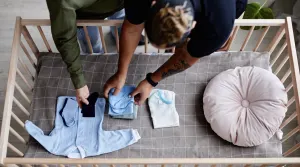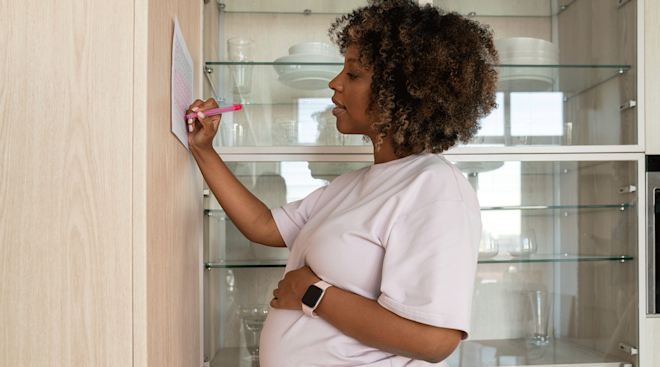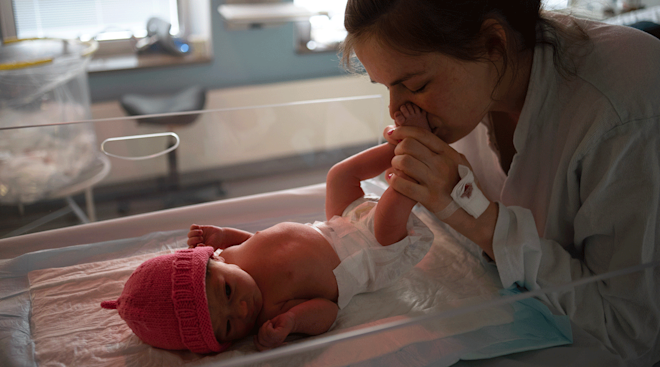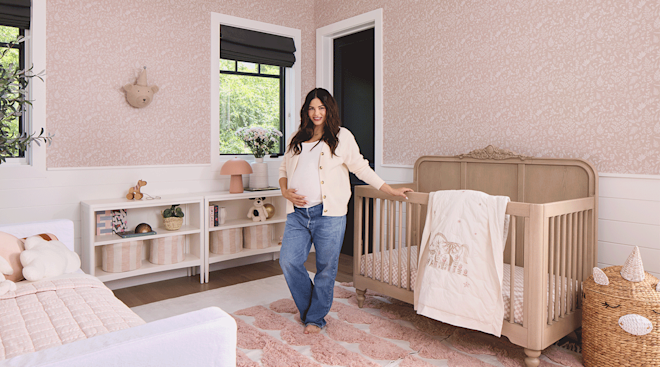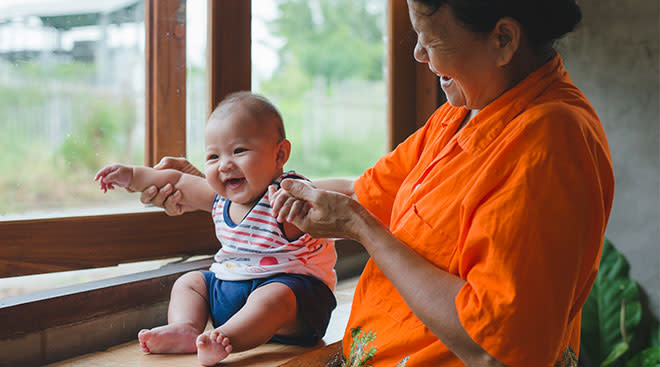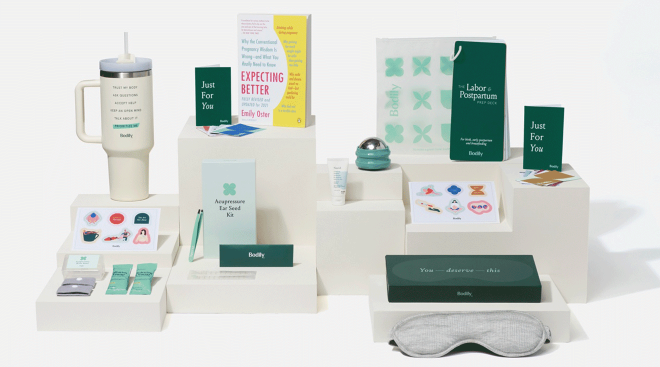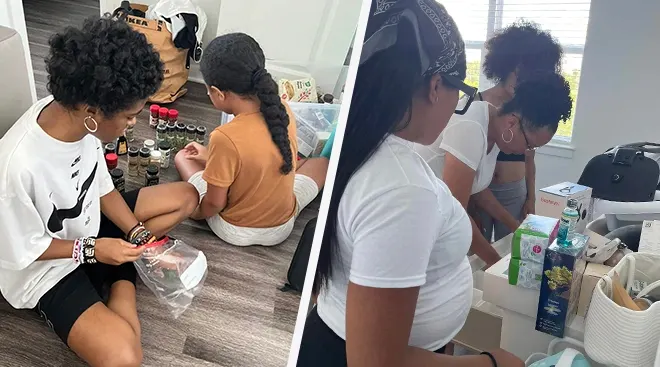How to Prepare for Breastfeeding
Whether it’s by stocking up on diapers, sanitizing pacis or washing every onesie and blankie in gentle baby detergent, being prepared can help calm expecting parents’ nerves before baby comes. If you’re planning to breastfeed—whether it’s nursing, pumping or a combination of both—you might be wondering how much preparation you’ll need to do to make the process as smooth as possible once you welcome your little one to the world.
While everyone’s nursing journey is different, there are some ways you can help set yourself up for success. Learn how to prepare for breastfeeding from the experts and real moms, ahead.
One of the best things you can do to prepare yourself for breastfeeding is to take a class. Similar to a baby class, where you learn how to swaddle and change a diaper, a breastfeeding class is led by a professional lactation consultant who will provide you with loads of useful information on everything from how to find a good latch to how your body’s milk production works.
You can often find breastfeeding classes through hospitals or birthing centers. You can also ask your ob-gyn for guidance on quality classes in your area, or ask local moms for referrals.
If you’re wondering how to prepare for breastfeeding in the most proactive way, a one-on-one consultation with a lactation consultant is your best bet. “A class will provide you with a great overview of breastfeeding basics, but a one-on-one consultation with an [International Board Certified Lactation Consultant (IBCLC)] gives you the opportunity to ask in-depth questions about your own situation,” says Jacque Ordner, IBCLC, BSN, RN, RLC, a lactation consultant, registered nurse and medical advisor at Motif Medical.
In your consultation, you can expect a personalized approach based on your individual goals and history. “We assess breast anatomy, [look at your] full medical history, identify potential challenges, address specific questions and create tailored breastfeeding plans,” says Nicole Schwartz, IBCLC, a lactation consultant at Beyond Birth Collective in Atlanta. She says these consultations can also be a great way to get your partner involved. “Bringing your partner along to your prenatal appointment is a great way to help them understand how to provide support and become an active, informed participant in the breastfeeding journey,” she says.
As you go through your breastfeeding journey, you may find that some products are more helpful than others. Still, it’s a good idea to stock up on a few nursing essentials during pregnancy so that you have them on hand and ready to go after delivery.
Some products to consider include a nursing pillow (trust us, your neck and shoulders will thank you), nursing bras, nursing tops (a robe is also nice to have for comfortable, easy access) and nursing pads. Also make sure you have nutritious snacks to keep you energized and help build your milk supply, such as protein bars, lactation cookies, trail mix and energy bites. Kristen, a mom of two in North Carolina, says her favorite product while breastfeeding was the Haakaa milk collector. “I had no idea how much milk I was losing through leakage before I got this.”
Hand-expressing is effective for removing colostrum during late pregnancy, and “can be a tool to stimulate milk production after birth and a great way to get your baby calories and boost your confidence while you figure out latching,” explains Schwartz. Learning how to hand-express before baby’s born “allows you to familiarize yourself with your breasts before baby arrives,” she says.
Here’s how to hand-express, according to Schwartz:
- Position your thumb and fingers in a C-shape around your breast about 1 to 2 inches behind the nipple
- Press back into the chest wall
- Compress your fingers together, then release without moving your hands from the breast
- Repeat this rhythmic pattern: press, compress, release
Research says new-parent groups benefit the mom-baby bond and have a positive impact on a mom’s mental health. A moms’ group that also focuses on breastfeeding can provide these same benefits with additional nursing support.
Cara, a mom of three in Indiana, says her experience with a weekly nursing moms’ group, led by a lactation consultant at a nearby hospital, completely transformed her breastfeeding experience. “We could have [the lactation consultant] watch our baby eat, we could ask her questions, talk about things that we were struggling with and ask for resources,” she says. She adds that the group helped her build a community, and even though her nursing years are behind her, she’s still in touch with some of the moms she met through the group.
If you’re planning on pumping, it’s a good idea to have your ob-gyn write a prescription for your breast pump early—if you require one, says Lisa, a mom of eight in Indiana. This is so you can start the process of getting one through your insurance provider—in the US, most insurance plans are required to cover the cost of an electric pump up to a certain dollar amount. After you get your prescription, there are a few companies that can help you navigate your insurance plan, walk you through your breast pump options and help you find the one that’s right for you.
After you’ve picked out your breast pump, Ordner recommends getting an idea of your flange size (a flange is a cone-like shield that fits over your nipple when pumping). Most pumps include a set or two of flanges, but most measure 24 millimeters or larger and Ordner says most women have smaller nipples than this. “Measuring your nipples at 38+ weeks will give you a ballpark idea of your flange size,” she says.
Try to be conservative on how many flanges you purchase at this point, because your size could slightly change. “Your nipple size might change once your milk production ramps up, so it’s a good idea to recheck after about two weeks postpartum,” says Ordner.
You’re going to have your hands full with baby once you bring them home, but someone’s still gotta do the dishes! Household tasks can pile up and lead to stress for a new parent, which can cause a dip in your milk supply. Schwartz suggests making a plan for these everyday tasks ahead of time.
“Your job postpartum is to heal and to feed baby,” she says. “While you’re pregnant, talk to your partner, family and friends about getting help for meals, grocery shopping, cleaning and laundry.” She suggests setting up a meal train so friends can bring you lunch or dinner during the newborn phase. You can also add grocery-store gift cards or cleaning services to your baby registry to use after baby arrives.
“So many new parents feel blindsided if they don’t understand how frequently newborns need to eat and how short their sleep cycles are,” Ordner says. To avoid this, she recommends taking time to learn this information during pregnancy. While no baby is exactly the same, having some newborn knowledge is better than going in totally uninformed.
“Understanding that breastfed newborns need to eat at least 8 to 12 times per day, and that they often don’t space out those feedings, is essential for keeping your sanity in the postpartum period,” Ordner says. “It’s also essential to know that it’s biologically normal for babies to wake often and need support to go back to sleep. Having realistic expectations will help you better enjoy the newborn phase.”
When you’re a new parent, there are some things that you simply can’t fully prepare for—and this includes breastfeeding. It’s helpful to go into your breastfeeding journey equipped with knowledge, but it’s also important to expect challenges and understand that you’ll need to be flexible.
Jacklyn, a mom of one in North Carolina, says that despite all of the planning and research she did, she was still surprised by the realities of breastfeeding. “I read all the blogs, watched all the TikToks, bought all the creams, two different pumps, the [nipple shields], the nursing bras, lactation supplements, etc.” she says. “I basically bought and read everything I could to set me up for success, and I still wasn’t mentally prepared for the physical toll and pain of breastfeeding.” Even though it wasn’t her original plan, Jacklyn ended up opting to exclusively pump and was able to provide enough for her daughter to bottle-feed.
No matter how much you prepare for breastfeeding, remember that you can always ask for support when you need it. A lactation consultant can help you adjust to breastfeeding, troubleshoot any issues—and find success in your nursing journey with baby.
Please note: The Bump and the materials and information it contains are not intended to, and do not constitute, medical or other health advice or diagnosis and should not be used as such. You should always consult with a qualified physician or health professional about your specific circumstances.
Plus, more from The Bump:
Jacque Ordner, IBCLC, BSN, RN, RLC, is a lactation consultant, registered nurse and medical advisor at Motif Medical.
Nicole Schwartz, IBCLC, is a lactation consultant at Beyond Birth Collective in Atlanta.
Office on Women’s Health, US Department of Health and Human Services, Preparing to Breastfeed, February 2021
The Journal of Perinatal Education, The Value of New Parent Groups in Child and Family Health Nursing, Summer 2009
US Department of Health and Human Services, Health Benefits & Coverage: Breastfeeding Benefits
UT Southwestern Medical Center, 4 Factors That Can Decrease Breast Milk Supply - and How to Replenish It, May 2022
Learn how we ensure the accuracy of our content through our editorial and medical review process.
Navigate forward to interact with the calendar and select a date. Press the question mark key to get the keyboard shortcuts for changing dates.























